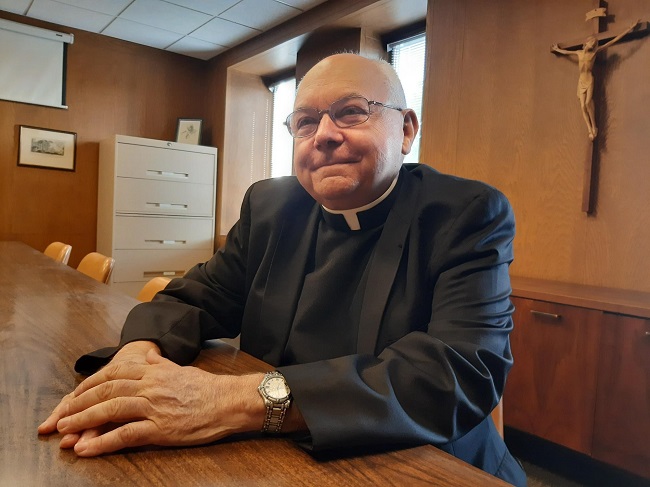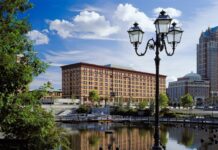
Monsignor Raymond B. Bastia serves as vicar of planning and financial services for the Roman Catholic Diocese of Providence, which is restoring the Cathedral of Saints Peter and Paul in Providence.
A native of Providence, Bastia is an alumnus of Our Lady of Providence Seminary and earned a bachelor’s degree in sacred theology from the Pontifical North American College in Rome. He was ordained a priest in 1975 and appointed a “Chaplain to His Holiness” Pope Benedict XVI in 2008.
PBN: What does it mean to the Roman Catholic Diocese of Providence to restore the Cathedral of Saints Peter and Paul, which was completed and consecrated in 1889?
BASTIA: The Cathedral of Saints Peter and Paul has tremendous spiritual meaning to us as the mother church of the Diocese of Providence. Thousands of Masses have been celebrated here and countless Catholics [were] baptized, confirmed, and married or ordained here.
Six of the diocese’s seven bishops have either been ordained or installed as bishop here. Additionally, the cathedral holds significant historical and architectural value and is listed on the National Register of Historic Places. It is also the largest church in the state.
PBN: The project involves improvements to the cathedral, including replacement of the slate roof, work on the gutters, valleys, copper flashing and perimeter stonework. How has the work been going, and what was the primary reason for restoring the property?
BASTIA: The ongoing restoration work on the cathedral has gone well. The replacement of the slate roof was work that was anticipated and funding was planned. The current restoration of the towers became necessary because of age-related deterioration from weather and time.
PBN: How close to the original materials are the ones being used on the building, such as the slate roof, and where were they sourced from?
BASTIA: We are carefully selecting materials very close to the original. The slate from the roof was sourced in Vermont and stone for the towers was quarried in New England. In addition, much of the original stone that needs to be removed is being reshaped and repurposed for use elsewhere in the project.
PBN: What challenges did the diocese face after spending $5 million to finance the roof repairs only to learn that $8.5 million would need to be spent to address unexpected issues with the cathedral’s towers?
BASTIA: The urgency and scope of the work needed to stabilize and preserve the cathedral’s towers was discovered during the replacement of the roof. Because the work was not planned, it does present a funding challenge for the diocese. We are working to identify funds to complete the project.
PBN: What areas of the building were in the most need of attention, and are there any plans to restore any other areas of the property?
BASTIA: The cathedral towers were very deteriorated from the effects of weather and time and needed immediate attention. We will continue to be vigilant in the maintenance and upkeep of this historical landmark. Future needs may include ongoing maintenance to the cathedral’s Casavant pipe organ and interior painting.
Cassius Shuman is a PBN staff writer. Contact him at Shuman@PBN.com. You may also follow him on Twitter @CassiusShuman.










